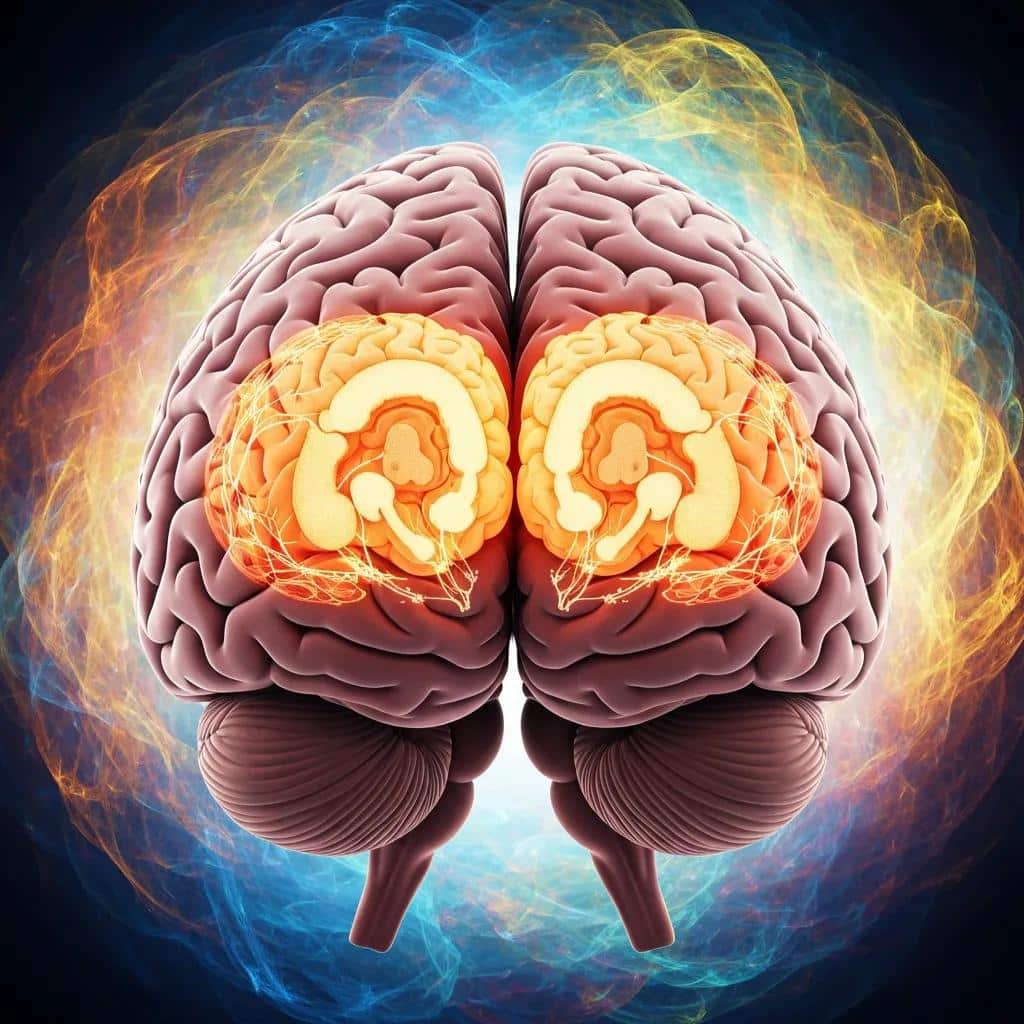Myths About Addiction Interventions That Keep Families Stuck and the Truth Behind Them
An intervention is a structured, evidence-informed process where family and professionals engage a person with substance use or behavioral health problems to promote treatment entry and safety. This article explains common myths about addiction interventions, details the neurobiological and social reasons those myths persist, and shows how timely, compassionate, and structured approaches improve outcomes for families and people struggling with substance use. To guide families and individuals to professional intervention services and connect them with appropriate addiction and mental health treatment, leading to recovery. Readers will find clear explanations of why addiction is not simply a choice, why waiting for “rock bottom” is dangerous, how compassionate models like ARISE® compare with the Johnson Model, how to distinguish enabling from healthy support, why recovery is a long-term process, and the evidence on intervention effectiveness. Practical lists, comparison tables, and scripts are included so families can identify next steps and seek professional guidance when needed.
Why Is Addiction Not Just a Choice? Understanding the Brain Disease Myth
Addiction is best understood as a chronic brain disease that alters reward, motivation, and executive-control circuits, producing compulsive use despite harmful consequences and reducing voluntary control. These neurobiological changes—driven by repeated exposure to substances and interactions with genetic and environmental vulnerabilities—explain why decision-making shifts and why simple willpower is often insufficient for sustained recovery. Recognizing addiction as a brain-based disorder reduces blame, opens the door to medical and behavioral treatments, and helps families adopt strategies that support engagement rather than punishment. Understanding these mechanisms reframes interventions from moral confrontation to clinical outreach and increases the likelihood that a loved one will accept help.
What Does Science Say About Addiction as a Brain Disease?

Neuroscience shows that repeated substance use reshapes the brain’s reward pathways and weakens prefrontal regions responsible for impulse control and planning, which in turn drives compulsive seeking and use. Genetic predispositions interact with early-life stressors and environmental exposure to determine individual vulnerability, meaning some people develop addiction after limited exposure while others do not. This mechanism helps explain variability in severity and response to treatment and supports using medical, behavioral, and psychosocial interventions that target brain function and behavior. Current research from authoritative sources emphasizes prevention, early treatment, and integrated care as responses that align with this brain-disease framework.
Why Does the “Addiction Is a Choice” Myth Persist?
The “choice” myth persists because early substance use often begins voluntarily, visible behaviors produce moral judgments, and stigma shapes public narratives about responsibility and failure. Cultural values that prize personal accountability conflate early voluntary decisions with the later neurobiological changes that diminish control, which obscures the disease model. Misunderstanding also fuels harmful family responses—shame, punishment, or isolation—that escalate conflict rather than encouraging treatment entry. Reframing addiction in clinical terms helps families replace blame with structured support, reduce stigma, and pursue strategies that match underlying mechanisms instead of moral narratives.
Do You Have to Hit Rock Bottom to Recover? Debunking the Rock Bottom Addiction Myth
Needing to reach “rock bottom” is a myth: early intervention improves medical, psychological, and social outcomes by reducing complications and increasing treatment engagement. Acting sooner limits the cumulative brain and health damage from substances, prevents legal and financial consequences, and preserves relationships that facilitate recovery support. Families who recognize early warning signs and pursue structured outreach reduce the risk of overdose and chronic decline, and they increase the chances of lasting recovery. Below are actionable benefits of intervening earlier rather than waiting for crisis.
How Does Early Intervention Improve Recovery Outcomes?
Early intervention increases the likelihood of timely medical stabilization, improves retention in treatment programs, and lessens the progression of co-occurring mental health conditions by addressing problems before they escalate. Engaging a person sooner preserves social supports and employment, which are strong predictors of positive long-term outcomes and quality of life. Practically, early outreach creates opportunities for outpatient care, medication-assisted treatment when appropriate, and family-based therapies that reduce relapse risk. Families that learn to identify warning signs and offer structured, compassionate offers of help enable faster treatment entry and better prognoses.
What Are the Risks of Waiting for Rock Bottom?
Waiting can lead to overdose, worsening physical and mental health, criminal legal consequences, job loss, and eroded family trust—outcomes that make recovery harder and more dangerous. Delay also entrenches patterns of enabling and avoidance that harm both the person with addiction and supporting family members, increasing family trauma and reducing the options available for effective intervention. Early action reduces these risks and preserves the ability of families to participate in a continuum of care that can support sustained recovery. Recognizing and responding to early signs is therefore both a protective and strategic choice for families.
Are Interventions Always Confrontational? Truths About Compassionate and Structured Approaches

An intervention can be a compassionate, clinically guided process that combines assessment, family coaching, and an evidence-based plan to help a loved one accept treatment rather than a shouting match or ultimatum. Structured models use preparation, rehearsed communication, and professional outreach to reduce defensiveness and increase the chance of treatment entry; they are designed to be respectful, clear, and outcome-focused. Skilled interventionists help families choose an approach—whether collaborative, educational, or more structured—that fits the person’s situation and clinical needs. Addiction Interventions uses model selection and family-centered planning to support engagement and the continuum of care, aligning practical outreach with the organization’s mission: To guide families and individuals to professional intervention services and connect them with appropriate addiction and mental health treatment, leading to recovery.
How Do ARISE® and Johnson Model Interventions Work?
ARISE® is a collaborative approach emphasizing family engagement, empathy, and shared problem-solving to motivate voluntary treatment entry, while the Johnson Model is more structured and historically incorporated a formal confrontation and educational elements intended to break denial. ARISE® typically involves iterative family coaching, outreach, and a staged offer of help that empowers the individual to choose treatment, whereas the Johnson Model centers on a planned family presentation of consequences and treatment options. Choosing between models depends on the person’s readiness, safety concerns, and clinical complexity; professionals tailor the process to minimize harm and maximize treatment uptake. The table below summarizes these differences and complementary benefits.
This section delves into the distinct methodologies of ARISE® and the Johnson Model, highlighting their core principles and benefits.
Intervention Techniques for Addiction: A Comprehensive Overview
This chapter discusses Intervention techniques that may be used to assist individuals in late adolescence who need treatment for substance use disorders, eating disorders, and other types of compulsive behaviors. Data on the prevalence of drug and alcohol use and abuse among adolescents in the United States is outlined along with the economic impact of these diseases and disorders. In addition, the negative effect on family systems is detailed. Importantly, information on the four primary Intervention techniques practiced in the United States is presented. These include the Johnson Institute Model, the ARISE (a relational intervention sequence for engagement) Model, the Family Systems Model and the Nouthetic Model. Each protocol is outlined so the reader may have a better understanding of these models and how the use of these techniques may be effective in not only encouraging afflicted individuals to accept help but also in supporting families through the process of recovery.
Intervention: The First Step to Recovery from Addiction, 1986
| Intervention Model | Approach | Key Benefit |
|---|---|---|
| ARISE® Intervention | Collaborative, motivational family coaching and staged outreach | Encourages voluntary acceptance with lower resistance |
| Johnson Model Intervention | Structured family presentation with educational and consequence-based elements | Can prompt rapid decision-making in high-resistance cases |
| Compassionate Family-Based Intervention | Empathy-driven, clinically informed support with professional facilitation | Reduces defensive reactions and supports long-term engagement |
Why Is Compassion Important in Addiction Interventions?
Compassion reduces shame and defensive reactions, improving the chance that a person will hear offers of help and consider treatment options, and it supports long-term therapeutic engagement. Families who communicate with nonjudgmental language, clear boundaries, and consistent follow-through increase trust and reduce cycles of blame that push people away from care. Practical compassionate phrases—focused on safety, concern, and available help—create openings for dialogue that can lead to assessment and treatment entry. Professional guidance in crafting these messages helps families stay consistent and effective during a stressful process.
Is Enabling Always Harmful? Understanding Healthy Support vs. Enabling in Families
Enabling and healthy support are distinct: enabling protects a loved one from consequences and often perpetuates use, while healthy support sets clear boundaries, links help to treatment, and protects family wellbeing. Identifying behaviors that function as enabling versus those that promote accountability is crucial for families seeking to influence positive change. Replacing enabling with consistent, compassionate boundaries increases safety, reduces financial harm, and encourages treatment engagement. The following lists and table help families spot enabling patterns and adopt practical alternatives.
Families can learn to identify common enabling behaviors and replace them with healthier approaches.
- Providing money to cover substance use: This shields the person from consequences and fuels continued use.
- Hiding use or lying to protect reputation: Concealment prevents intervention and delays treatment entry.
- Accepting repeated broken promises without consequences: This reduces motivation to change and erodes family boundaries.
What Behaviors Define Enabling vs. Healthy Boundaries?
Enabling behaviors include debt payoff for substance-related expenses, providing transportation to acquire substances, and minimizing or excusing harmful behavior to avoid conflict. Healthy boundaries include requiring treatment attendance as a condition for support, refusing to finance substance use, and enforcing logical consequences while offering help to get into care. Families that document patterns, rehearse scripts, and coordinate consistent responses present a united front that reduces ambiguity for the person in need. Replacing enabling with structured offers of support requires courage, consistency, and often external coaching.
An action-oriented comparison helps families translate insight into practice.
| Family Behavior | Why It Happens | Healthy Alternative |
|---|---|---|
| Paying bills for someone actively using | Fear of immediate harm or loss; avoidance of conflict | Link financial help to treatment engagement and documented steps |
| Making excuses to others about behavior | Shame and desire to protect family image | Use concise, factual statements; maintain privacy without covering up harm |
| Intervening in legal or work consequences | Protecting from short-term pain | Support navigation of consequences while offering treatment options |
How Can Families Support Recovery Without Enabling?
Families can support recovery by encouraging assessment, attending family coaching, and setting consistent consequences that prioritize safety and treatment access. Practical steps include creating a clear plan for offers of help, documenting behaviors and impacts, rehearsing supportive language, and connecting with professional interventionists or family therapy resources. Self-care for family members—therapy, support groups, and setting limits—is essential to sustain healthy boundaries and avoid burnout. When families act from informed compassion, they increase the odds that a loved one will accept help and enter a continuum of care.
Is Addiction Treatment a Quick Fix? Exploring the Continuous Recovery Journey Myth
Addiction recovery is a long-term, often non-linear process that resembles management of chronic medical conditions rather than a single cure, requiring ongoing supports and adaptive planning. Treatment episodes can produce meaningful change, but sustaining recovery typically involves follow-up care, relapse prevention planning, medication management when appropriate, and community supports that address broader social and mental health needs. Normalizing this trajectory helps families respond constructively to setbacks and maintain essential supports during relapse or adjustment phases. Long-term thinking reduces unrealistic expectations and promotes sustained investment in resources that support recovery over months and years.
Why Is Relapse Part of the Chronic Illness Process?
Relapse occurs because brain changes, environmental stressors, and co-occurring mental health conditions can re-activate risk behaviors even after significant progress, making relapse a clinical signal rather than moral failure. Statistics indicate relapse rates for substance use disorders are comparable to those for other chronic conditions, and each episode is an opportunity to adjust treatment plans, strengthen supports, and reduce future risk. Viewing relapse through a public-health lens encourages families to respond with safety planning, renewed engagement with treatment providers, and adjustments to aftercare strategies. This perspective allows families to prioritize prevention and rapid re-engagement rather than punishment.
How Does Long-Term Support Improve Recovery Success?
Long-term support—continuing care, peer groups, outpatient therapy, and medical follow-up—improves retention and reduces recurrence by maintaining accountability, treating co-occurring conditions, and reinforcing coping strategies. Families play a central role by helping coordinate ongoing appointments, supporting sober housing decisions, and attending family therapy that addresses systemic issues contributing to relapse. Research and practice both show that a continuum of care that adapts to changing needs is associated with better functional outcomes and reduced healthcare and legal crises. Practical family involvement in aftercare planning increases the sustainability of recovery gains.
Long-term recovery supports include:
- Structured outpatient programs and therapy that reinforce skills learned in initial treatment.
- Medication management when indicated to stabilize neurobiological vulnerabilities.
- Peer support and sober community to provide ongoing social reinforcement and accountability.
Do Interventions Really Work? Debunking the Myth That Interventions Don’t Help
Professional interventions are effective at engaging many people in treatment: reported outcomes indicate high rates of treatment entry following structured, clinician-guided outreach, especially when family coaching and model selection are tailored to the individual’s needs. “Success” is measured differently across studies—immediate agreement to enter treatment, retention at 30/90 days, and long-term abstinence or managed use are distinct metrics—so families should understand what an intervention can realistically achieve and plan for follow-up care. Evidence-based interventions increase treatment uptake, and professional coordination with treatment providers supports a continuum of care that extends beyond the initial acceptance. If you want help understanding options or arranging an assessment, contact Addiction Interventions for a consultation to explore tailored pathways to care.
What Are the Success Rates of Professional Addiction Interventions?
Reported figures often show that structured interventions result in treatment acceptance in a substantial proportion of cases, with some industry reports indicating rates in the range of 80–90% for getting individuals to agree to treatment when professional interventionists lead the process and family preparation is thorough. Longer-term outcomes vary and depend on treatment quality, continuity of care, co-occurring disorders, and social supports; entry into care is a critical first step but not a guarantee of sustained remission without ongoing supports. Interpreting statistics requires attention to definitions—entry vs. retention vs. long-term recovery—and a plan that links the intervention to appropriate post-entry services. Families should prioritize evidence-based referral pathways and follow-up strategies to translate initial acceptance into sustained recovery.
| Intervention Type | Reported Success Rate | Typical Outcome |
|---|---|---|
| Family-centered professional interventions | ~80–90% agreement to enter treatment (reported) | High short-term treatment entry; variable long-term retention |
| Motivational, collaborative models (e.g., ARISE®) | Moderate-to-high engagement in voluntary treatment | Better engagement, lower resistance |
| Structured/confrontational models (e.g., Johnson Model) | Varies by context; can prompt rapid decisions | Rapid entry in some high-resistance cases; follow-up support needed |
How Does Addiction Interventions Provide Customized Support?
Addiction Interventions provides customized support by assessing family dynamics, selecting an appropriate intervention model (ARISE®, Johnson Model, or family-centered alternatives), and coordinating referrals to treatment and aftercare resources across a nationwide network. The process typically includes assessment, family coaching, a planned outreach strategy, and follow-through referrals to align with clinical needs and safety considerations. This tailored coordination supports continuity of care from the initial outreach through treatment admission and aftercare planning, reducing gaps that often lead to dropout or relapse. To guide families through these steps and explore individualized options, contact Addiction Interventions for a consultation that connects you with a tailored intervention plan.
To guide families and individuals to professional intervention services and connect them with appropriate addiction and mental health treatment, leading to recovery. Contact Addiction Interventions for guidance and next steps.

